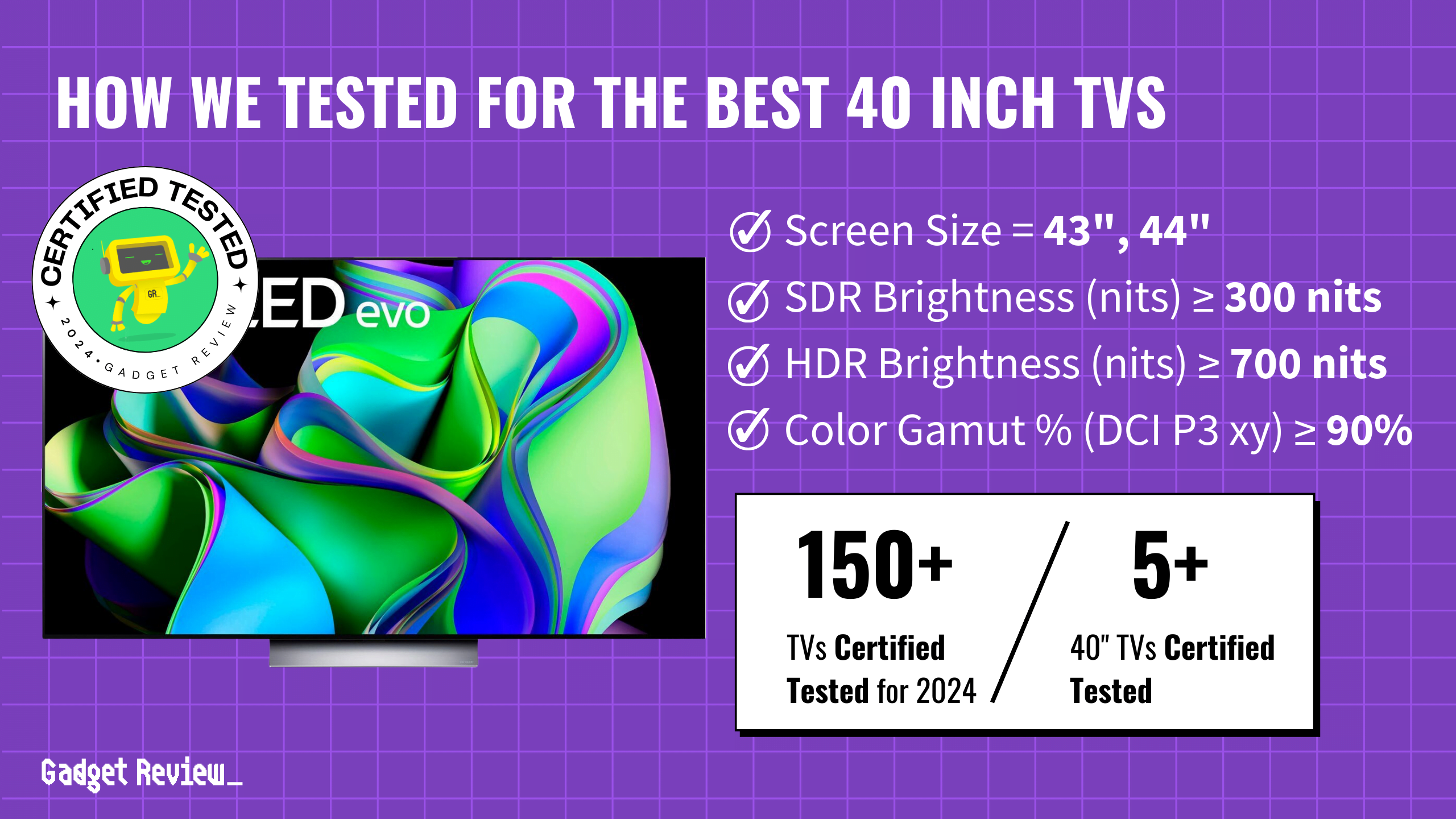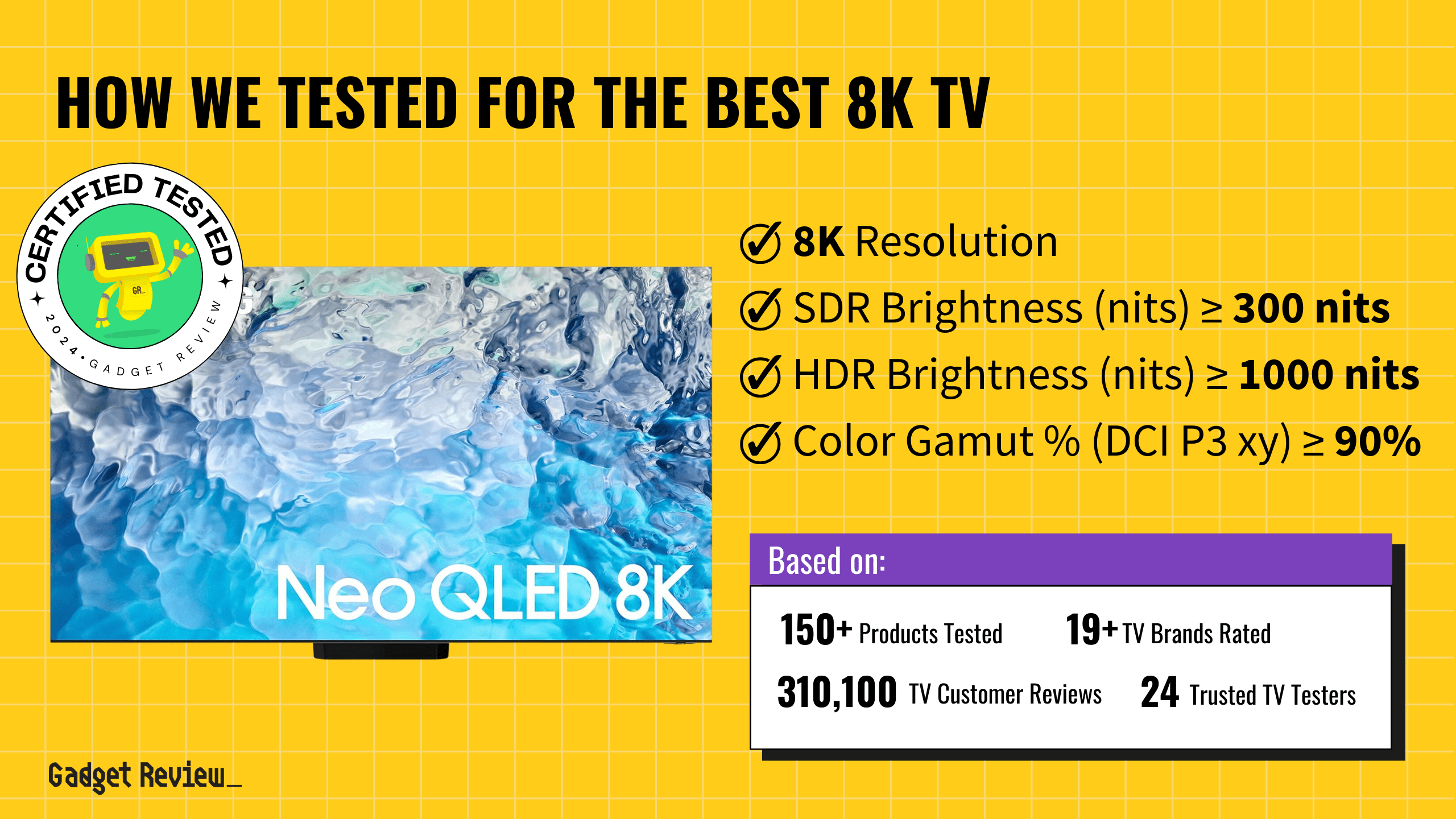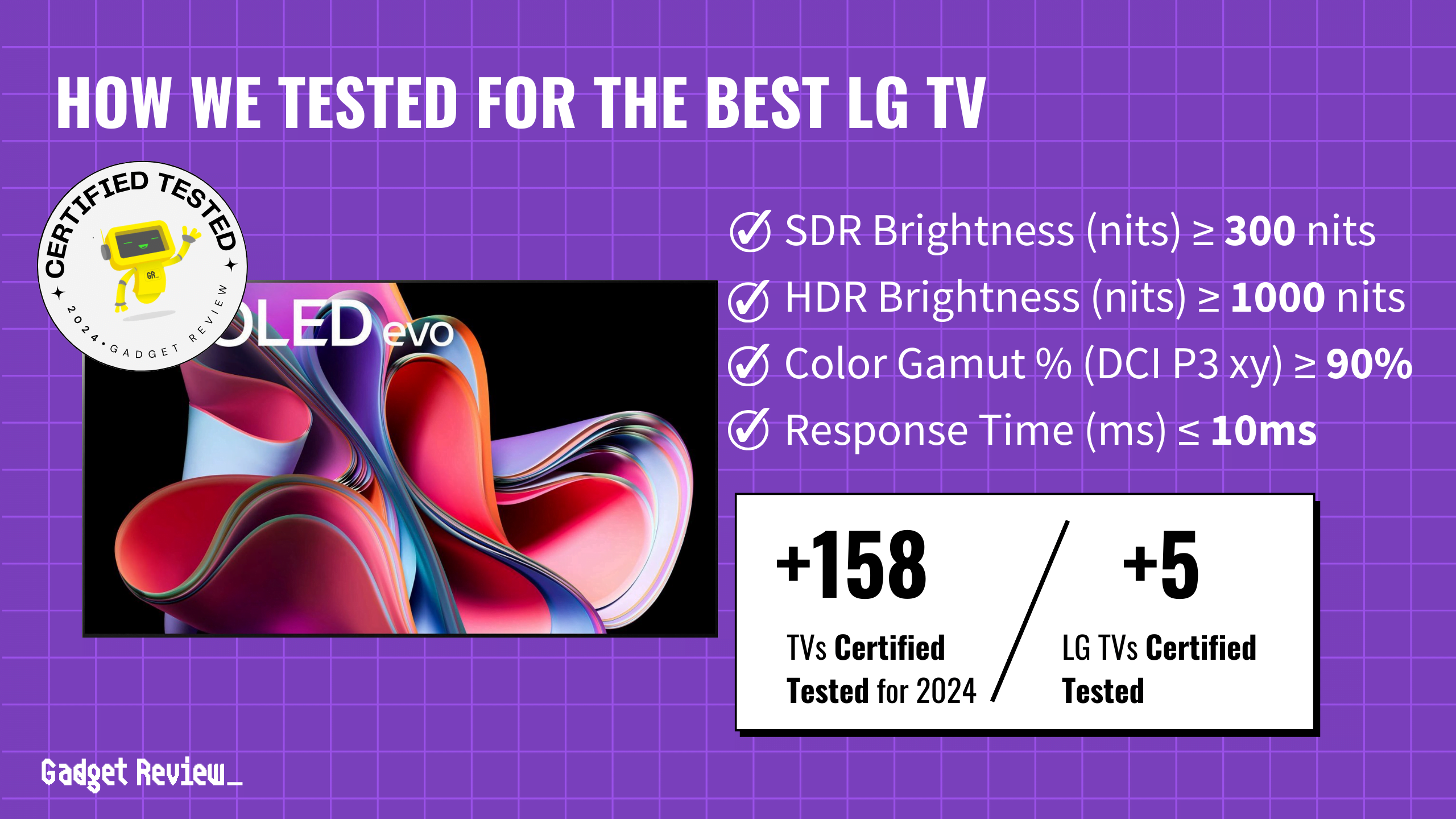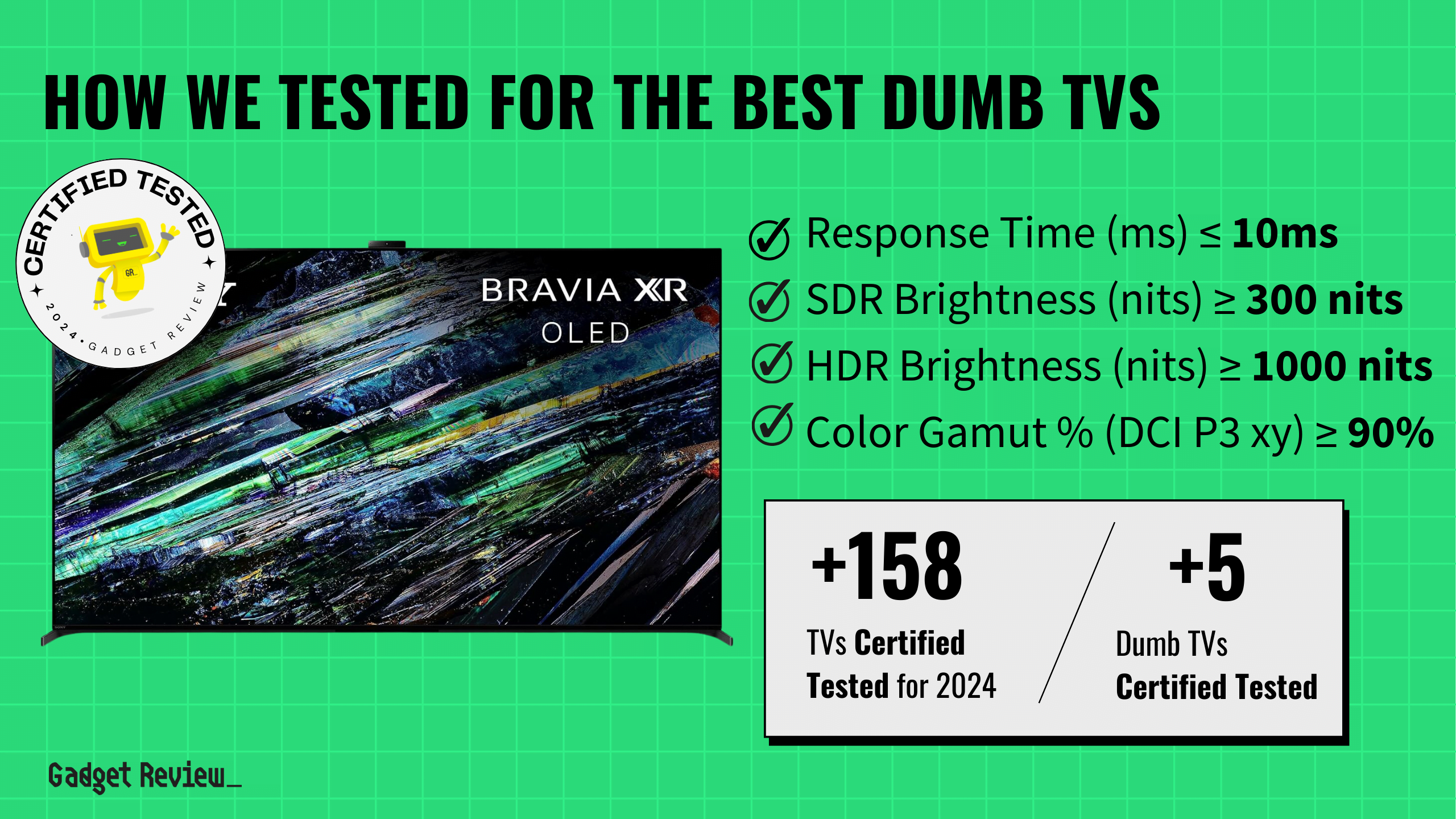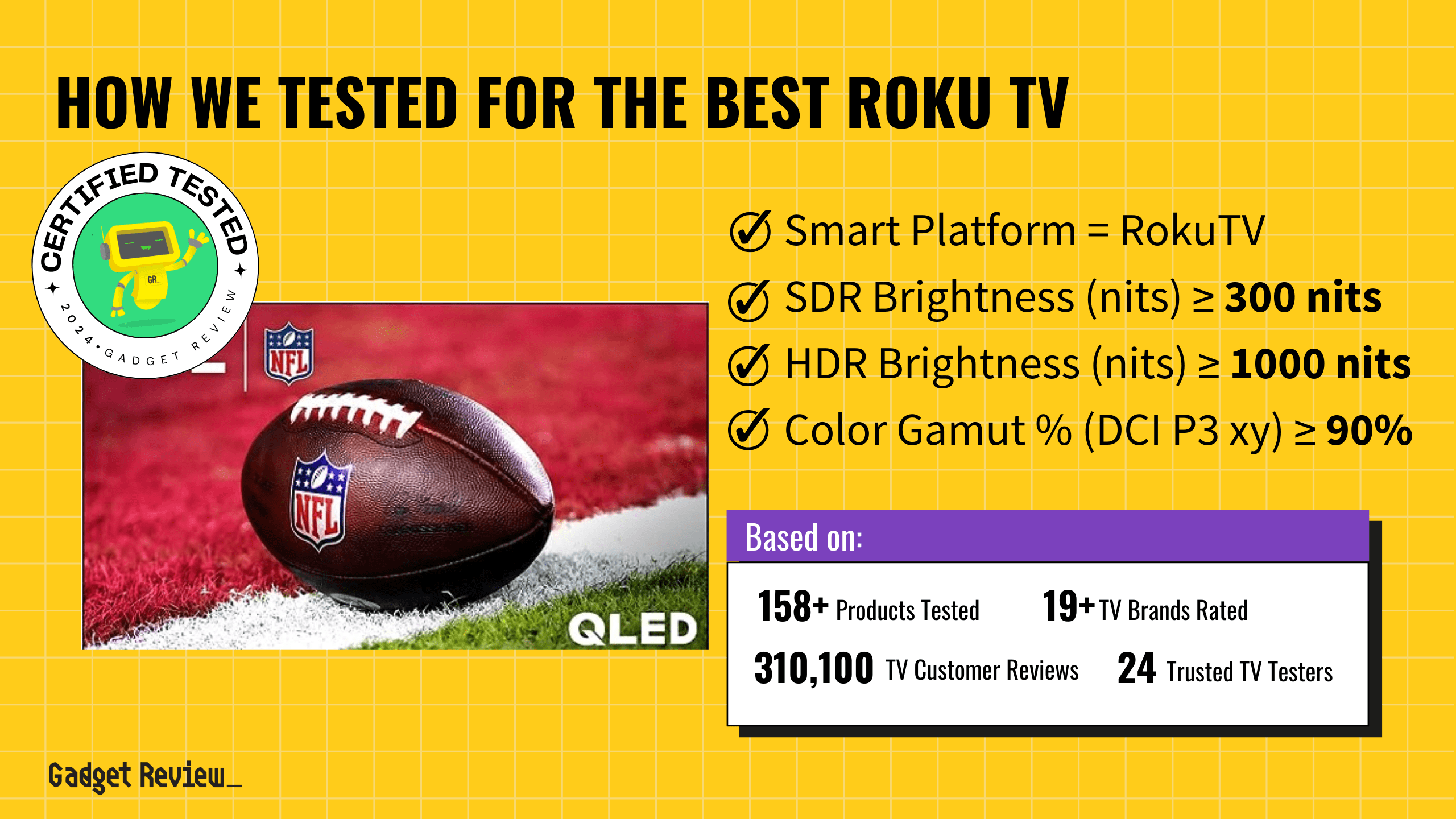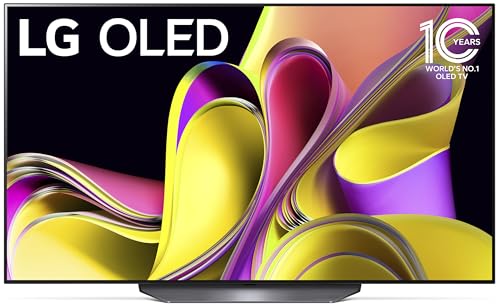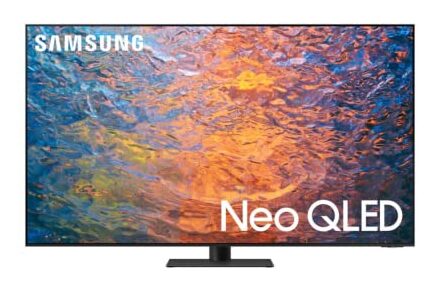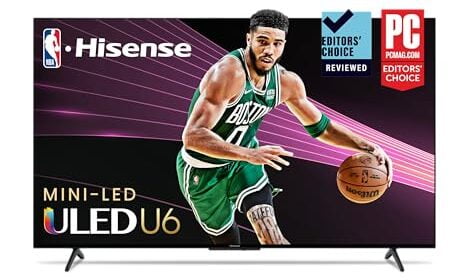The best 40-inch TVs are ideal for spaces like dorm rooms, RVs, kitchens, and can also serve well as computer monitors in some setups. Our guide is meticulously devised based on thorough test data, covering a wide price range to ensure you find a model within your budget, from cost-effective to premium options. This ensures that despite the smaller selection, you don’t have to compromise on quality or value to choose the best TV for your needs.
Whether you’re on a tight budget or looking for advanced features, our test data-driven recommendations make it easier to choose a 40-inch TV that fits your space and meets your needs with excellence.
How Did We Rank the 40 Inch TVs?
To assess how high or low quality a 40-inch TV is, one must evaluate specific testing criteria against reference industry standards. Using our thorough TV Testing Methodology, we determined there are 1 minimum specs and 6 criteria below (3 required, 3 nice to have) that ensure your 40 inch TV looks as good as the creator intended it.
?️ Minimum Specifications
- Size: 43″ or 44″, offering sufficient screen space without dominating your environment.
? Test Criteria
- SDR Brightness: Must meet or exceed 300 nits to deliver vivid visuals in standard dynamic range.
- HDR Brightness: Achieve a minimum of 700 nits for breathtaking detail and contrast in high dynamic range scenes.
- Color Accuracy: Ensure a color gamut of at least 90% DCI P3 xy for true-to-life colors.
? “Nice To Haves”
- Contrast Ratio: Strive for a minimum contrast ratio of 10,000:1 to enjoy deep blacks and stunning highlights.
- EOTF Accuracy: Maintain a delta of no more than 0.018 for precise brightness and contrast in HDR content.
- Fast Response Time: Aim for a response time of 15ms or less to keep transitions smooth and seamless.
We’ve redefined TV buying guides, setting us apart from any other site on the planet. Our unique approach combines in-house verification with a comprehensive dataset from over 200+ trusted sites, focusing on key testing metrics to rank the top rated 40-inch TVs. Testing data and specs include brightness between 300 nits and 700 nits, color accuracy of Minimum 90% DCI P3 color gamut, and a screen size of 40″. Our commitment to unbiased reviews is powered by our ‘True Score’ system, targeting low quality and fake reviews. Commissions fund this mission. No bias. No BS.
Latest Updates
- 03/11/2024: Completely and thoroughly overhauled the guide to include the best and latest 40-inch TVs.
- 11/29/2023: Republished the list to include TVs based on our True Score system.
Top 40 Inch TVs For 2025
Prices accurate at the time of publishing
For the best 40-inch TVs, they must be 40 inches and handle glare well. Otherwise, they’re out!

Best Overall

Runner Up

Best Value

Best Budget

Best Mid-Range

Premium Pick
Sony A90K OLED TV
Ideal for cinematic and gaming experiences in dimly lit rooms, the A90K excels in color accuracy and contrast, though its higher input lag suits more casual gamers.
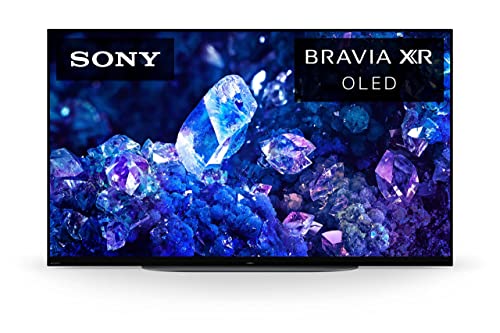
True Score
87867Experts
931kCustomers
Absolutely Fresh
 SAVE $102$1,299.99$1,198.00
SAVE $102$1,299.99$1,198.00Snapshot
Reasons to Buy
- Excellent picture quality
- High contrast ratio
- Low-tested response time and input lag
- Fast refresh rate and VRR support
- Wide viewing angles
Reasons to Avoid
- Limited HDR peak brightness
Specifications
Max Resolution 3840 x 2160 (4k) 
Backlight Type No Refresh Rate 120 Hz Display Type OLED HDMI Inputs 4 
HDMI Type HDMI 2.1 HDR Format Dolby Vision, HDR10, HLG 
HomeKit Compatible Yes 
Number of Audio Channels 7.1 
Panel Type RWBG Screen size 42″, 48″ 
Smart Platform Google TV 
Speaker Output 10W + 10W + 5W 
Sync Technology No 
VRR Yes All Specs
Test Results
SDR Brightness (nits) 288 HDR Brightness (nits) 593 Color Gamut % (DCI P3 xy) 99.375 Response Time (ms) 3 Contrast Ratio (x:1) 0 EOTF (600 nit delta) 0.004 Color Gamut % (DCI P3 uv) 99.67 Color Gamut % (Rec 2020 xy) 73.54 Color Gamut % (Rec 2020 uv) 78.83 Color Gamut % (sRGB) 0 Color Gamut % (Rec 709) 0 Color Gamut % (BT.2020) 71.2 Color Gamut % (Adobe RGB) 0 Color Gamut % (BT.709) 0 Input Lag (ms) 16.9 Color Washout (Degrees) 58 Color Shift (Degrees) 31 Brightness Loss (Degrees) 61 Reflections (%) 1.8 Low-Freq Extension (Hz) 126.99 Freq Response StdDev @ 70db 4.02 Freq Response StdDev @ 80db 4.58 Weighted Total Harmonic Distortion @80db 0.14 Intermodulation Distortion @80db 0.47 EOTF (1000 nit delta) 0.0041 EOTF (4000 nit delta) 0.0041 All Tests
All Retailers
- $1,198.00$1,300Save $102
Availability
In StockFree Shipping
No - $1,199.99$1,300Save $100
Availability
In StockFree Shipping
No Availability
In StockFree Shipping
Yes
Our Verdict
The Sony A90K OLED TV stands out thanks to its unmatched color accuracy. It boasts best-in-class color gamut coverage at 99.38%, ensuring vivid and precise hues that enthusiasts and professionals alike will appreciate. Despite its lower SDR brightness level of 288 nits, the A90K excels in delivering the deep blacks and infinite contrast ratios unique to OLED technology.
This makes it ideal for movie buffs and gamers who prefer the depth and detail of their content over sheer luminosity. The HDR brightness of 593 nits, while not the highest, is plenty for watching HDR content in darker viewing environments, where an OLED’s strengths shine brightest. Coupled with its very strong EOTF of 0.0040, the A90K is an excellent choice for movie buffs looking for accurate gamma and mastering.
When it comes to response time, the A90K manages an extremely respectable 3.0 ms – not the fastest, but more than enough for fast-paced sports and video games alike. However, its input lag comes in at 16.9 ms, among the slowest on the list, and by a significant margin, meaning it’s not ideal for highly competitive gamers. If you play games more casually however, it’s good enough.
The A90K can competently handle any kind of content as long as the room it’s in isn’t too bright. Its exceptional color gamut and fantastic EOTF, coupled with its decent price point make it an excellent option for anyone looking to get a smaller TV that can still faithfully render movies as they were meant to be seen.
Category Snapshot
TVs
- Total Brands/Products Tested
17 Brands, 158 Products
- Top 2 Brands
LG, Hisense
- Price Range (Budget-Premium)
$400-$2000
- Average True Score
76.65
- Important Test Criteria
Brightness (cd/m2)
Contrast Ratio (1000:1) - Most Trusted Testers

- Top TV Experts
- Recommended Retailer

- Typical Warranty
1 year
- Covered by Insurance
Yes – AKKO
- Test Methodology

Best Overall

Runner Up

Best Value

Best Budget

Best Mid-Range

Premium Pick
LG Flex OLED TV
A unique, flexible display offering immersive gaming and cinematic experiences with good color accuracy and response time, albeit at a premium price.
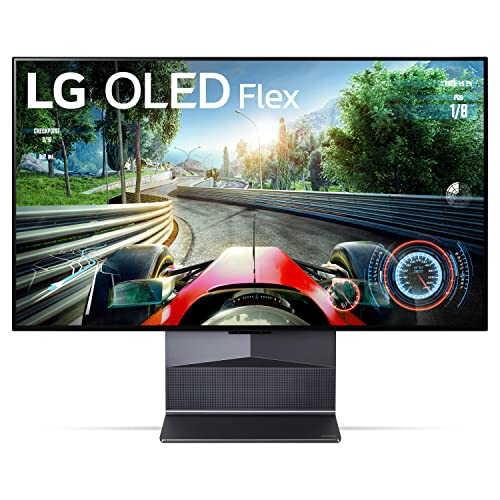
True Score
87872Experts
9313Customers
Absolutely Fresh
 $1,996.99
$1,996.99Snapshot
Reasons to Buy
- Exceptional picture quality
- Impressive brightness and contrast
- Variable Refresh Rate support
- Exceptional reflection handling
- Incredible response time
Reasons to Avoid
- Limited height adjustment and no VESA support
- Adjustable screen reverts to a flat position when off
- Risk of permanent burn-in
- Limited height adjustment and no VESA support
- The glossy display may cause reflections in bright lighting conditions
- Screen reverts to a flat position when off, which can be inconvenient
- The price may be high for some consumers
Specifications
Max Resolution 3840 x 2160 (4k) 
Backlight Type Full-Array Refresh Rate 120 Hz Display Type OLED HDMI Inputs 4 HDR Format Dolby Vision, HDR10, HLG 
LED Panel Type OLED Screen size 42″ 
Smart Platform webOS 
Sync Technology AMD FreeSync, G-Sync 
VRR Yes All Specs
Test Results
SDR Brightness (nits) 374 HDR Brightness (nits) 738 Color Gamut % (DCI P3 xy) 97.92 Response Time (ms) 2.5 Contrast Ratio (x:1) 0 EOTF (600 nit delta) 0.0028 Color Gamut % (DCI P3 uv) 99.19 Color Gamut % (Rec 2020 xy) 71.3 Color Gamut % (Rec 2020 uv) 74.64 Color Gamut % (sRGB) 0 Color Gamut % (Rec 709) 0 Color Gamut % (BT.2020) 0 Color Gamut % (Adobe RGB) 0 Color Gamut % (BT.709) 0 Input Lag (ms) 10 Color Washout (Degrees) 52 Color Shift (Degrees) 28 Brightness Loss (Degrees) 69 Reflections (%) 0.9 Low-Freq Extension (Hz) 113.14 Freq Response StdDev @ 70db 2.74 Freq Response StdDev @ 80db 2.83 Weighted Total Harmonic Distortion @80db 0.034 Intermodulation Distortion @80db 1.95 EOTF (1000 nit delta) 0.0024 EOTF (4000 nit delta) 0.0025 All Tests
All Retailers
- $1,996.99
Availability
In StockFree Shipping
No - $1,999.99$2,500Save $500
Availability
In StockFree Shipping
No
Our Verdict
The LG Flex OLED TV is a solid contender with a unique feature: it has a flexible, bendable screen. Users can adjust the curvature of the screen to match their viewing preferences, enhancing the immersive experience for gaming and cinematic content, or flattening the screen out to turn the Flex into a stand-in for a computer monitor.
With a color gamut coverage of 97.92%, the LG Flex OLED delivers excellent color accuracy, ensuring vibrant and true-to-life hues. Although its SDR and HDR brightness levels, at 374 nits and 738 nits respectively, put it more in the middle of the pack, they are perfectly suited for the OLED technology’s strengths in providing deep blacks and high contrast ratios. This ensures that viewers can enjoy a premium viewing experience with rich, detailed shadows and bright highlights, particularly in darker viewing environments where OLED screens excel.
If you’re looking to get the most out of your games, LG Flex OLED shines, thanks to an input lag of 10.0 ms and a swift response time of 2.5 ms. These specifications make it an attractive option for gamers seeking a responsive and immersive gaming experience.Coupled with its unique ability to flex, the TV can offer a more engaging gaming environment, drawing players into the action with a curved screen that envelops their field of view. The quick response time (second best on the list) also makes the Flex a great option for sports fans looking for blur-free fast action.
The Flex carves out its niche within the 40-inch TV market through its innovative flexible design and solid performance metrics. Its brightness is enough for most rooms, its color accuracy is good and pairs well with a fantastic response time and best-in-class EOTF (0.0028) for a TV that can tackle sports content and HDR home theater content with ease. It’s also got all the features you’d expect out of LG’s OLEDs, including fantastic contrast and the intuitive webOS smart interface for easy access to streaming services. The only drawback is the price – the Flex is the most expensive 40-inch on the list, and costs more than double its brother, the C3.

Best Overall

Runner Up

Best Value

Best Budget

Best Mid-Range

Premium Pick
LG C3 OLED TV
Best For Home Theater
With the best value, excellent color accuracy, and superior gaming performance, the C3 is versatile, favoring bright rooms and competitive gaming.
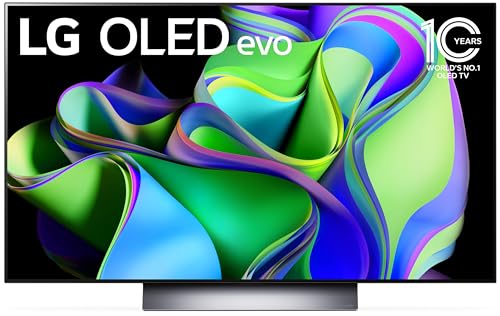
True Score
87869Experts
9310kCustomers
Absolutely Fresh
 SAVE $471$1,299.99$829.00
SAVE $471$1,299.99$829.00Snapshot
Reasons to Buy
- Excellent picture quality
- The near-infinite contrast ratio for perfect blacks
- Strong peak brightness
- High-performance motion handling
- Fast refresh rate
Reasons to Avoid
- Aggressive automatic brightness limiter
- Subpar sound quality
Specifications
Max Resolution 3840 x 2160 (4k) 
Backlight Type No Refresh Rate 120 Hz Display Type OLED HDMI Inputs 4 
HDMI Type HDMI 2.1 HDR Format Dolby Vision, HDR10, HLG 
HomeKit Compatible Yes 
LED Panel Type WOLED 
Number of Audio Channels 7.1.2 
Panel Type – Screen size 42″, 48″, 55″, 65″, 75″, 83″ 
Smart Platform webOS 
Speaker Output 20 Watts 
Sync Technology AMD FreeSync Premium, G-Sync 
VRR Yes All Specs
Test Results
SDR Brightness (nits) 383 HDR Brightness (nits) 795 Color Gamut % (DCI P3 xy) 98.98 Response Time (ms) 2.3 Contrast Ratio (x:1) 0 EOTF (600 nit delta) 0.0056 Color Gamut % (DCI P3 uv) 99.51 Color Gamut % (Rec 2020 xy) 73.28 Color Gamut % (Rec 2020 uv) 76.01 Color Gamut % (sRGB) 0 Color Gamut % (Rec 709) 0 Color Gamut % (BT.2020) 74.7 Color Gamut % (Adobe RGB) 0 Color Gamut % (BT.709) 0 Input Lag (ms) 9.6 Color Washout (Degrees) 63 Color Shift (Degrees) 34 Brightness Loss (Degrees) 70 Reflections (%) 1.1 Low-Freq Extension (Hz) 80 Freq Response StdDev @ 70db 1.14 Freq Response StdDev @ 80db 1.98 Weighted Total Harmonic Distortion @80db 0.085 Intermodulation Distortion @80db 4.49 EOTF (1000 nit delta) 0.0054 EOTF (4000 nit delta) 0.0051 All Tests
All Retailers
- $829.00$1,300Save $471
Availability
In StockFree Shipping
No - $876.95$1,197Save $320
Availability
In StockFree Shipping
No - $896.99$1,297Save $400
Availability
In StockFree Shipping
- $897.99$900Save $2
Availability
Free Shipping
No
Our Verdict
The LG C3 is one of the best 40-inch TVs thanks to its versatility and exceptional price point. Its color gamut coverage at 98.98% is nearly top-of-the-line, ensuring that it delivers rich and accurate colors at a price low enough to earn it the distinction of being one of the best value TVs on our list.
It also has the A90K beat on SDR and HDR brightness, reaching up 383 nits and 795 nits, respectively. This higher brightness makes it better suited for brighter rooms, though it’s still not ideal for extremely well lit rooms. While the improved HDR brightness helps improve the clarity of HDR content, the C3 does have a slightly worse EOTF of 0.0056 compared to the A90K, which means if gamma accuracy is what you’re after, the Sony may be the better choice.
If what you value most is gaming and fast-action sports content, the C3 delivers thanks to its best-in-class response time of 2.3 ms and an best-in-class input lag of 9.6 ms. These figures make the C3 the go-to option for competitive gamers and sports fanatics alike. Coupled with a low reflections rate of 1.1%, the TV ensures that external light sources do not create glare and obscure the on-screen action.
Between the excellent price point, fantastic response times, low input lag and strong brightness and color accuracy, the C3 is a jack-of-all-trades that favors gaming and sports content. If you don’t need absolutely perfect gamma tracking or you’re looking to secure an OLED TV without paying eye-watering OLED prices, the C3 is the way to go. Just be mindful that the risk of burn-in is still an issue – though a reduced one – when you have an OLED.

Best Overall

Runner Up

Best Value

Best Budget

Best Mid-Range

Premium Pick
Samsung QN90C NEO QLED Series
The brightest option for well-lit environments, offering vivid colors and a solid performance for casual gaming and sports, ideal for HDR content enthusiasts.
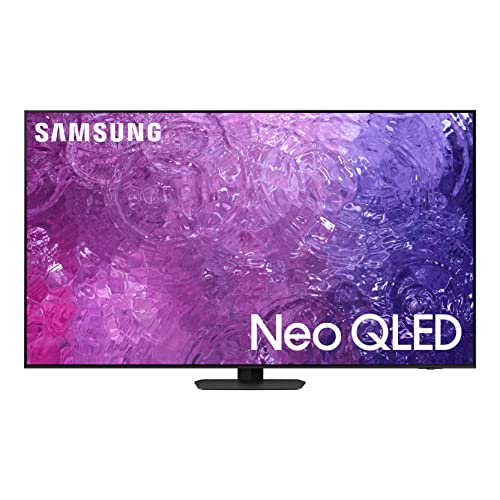
True Score
86859Experts
924kCustomers
Absolutely Fresh
 SAVE $330$1,197.99$867.95
SAVE $330$1,197.99$867.95Snapshot
Reasons to Buy
- Superb picture quality
- High brightness and contrast
- Low-tested response time and input lag
- High refresh rate and VRR support
Reasons to Avoid
- Moderate viewing angle
- Mild blooming
Specifications
Max Resolution 3840 x 2160 (4k) 
Backlight Type Full-Array Refresh Rate 120 Hz Display Type LED HDMI Inputs 4 
HDMI Type HDMI 2.1 HDR Format HDR10+, HLG 
HomeKit Compatible No 
Number of Audio Channels 4.2.2 
Panel Type Neo QLED Screen size 43″, 50″, 55″, 65″, 75″, 85″ 
Smart Platform Tizen 
Speaker Output 60 watts 
VRR Yes 
Works With Amazon Alexa, Bixby, Bluetooth, Google Assistant, Remote Control, SmartThings, Wi-Fi All Specs
Test Results
SDR Brightness (nits) 1,289 HDR Brightness (nits) 1,923 Color Gamut % (DCI P3 xy) 93.335 Response Time (ms) 10.2 Contrast Ratio (x:1) 83,200 EOTF (600 nit delta) 0.0046 Color Gamut % (DCI P3 uv) 93.64 Color Gamut % (Rec 2020 xy) 72.73 Color Gamut % (Rec 2020 uv) 75.69 Color Gamut % (sRGB) 98 Color Gamut % (Rec 709) 99.77 Color Gamut % (BT.2020) 73 Color Gamut % (Adobe RGB) 79.1 Color Gamut % (BT.709) 0 Input Lag (ms) 10 Color Washout (Degrees) 26 Color Shift (Degrees) 51 Brightness Loss (Degrees) 32 Reflections (%) 1.5 Low-Freq Extension (Hz) 100.79 Freq Response StdDev @ 70db 1.61 Freq Response StdDev @ 80db 2.38 Weighted Total Harmonic Distortion @80db 0.334 Intermodulation Distortion @80db 0.31 EOTF (1000 nit delta) 0.0046 EOTF (4000 nit delta) 0.0044 All Tests
All Retailers
- $867.95$1,198Save $330
Availability
In StockFree Shipping
No - $1,097.99
Availability
In StockFree Shipping
- $1,099.99
Availability
In StockFree Shipping
No - $1,199.01$1,500Save $301
Availability
In StockFree Shipping
Yes
Our Verdict
If you need your TV to overcome an extremely bright room with tons of natural or artificial light, the Samsung QN90C may be what you’re looking for. Capable of pumping out 1289 nits for SDR content and 1923 nits for HDR, the QN90C is the brightest TV on our list, bar none. This remarkable brightness level, paired with a color gamut of 93.34%, ensures vivid and bright for anyone in bright living spaces or offices.
The only non-OLED on our list, the QN90C obviously can’t match the infinite contrast ratio (the QN90C manages a 832000:1) or pure blacks of an OLED panel, but that means it doesn’t have to compromise its brightness and has no risk of burn-in. It also comes at an extremely attractive price point, just barely losing to the C3 when it comes to value, and it’s more than twice as bright when showing HDR content (and nearly four times brighter with SDR!) The TV also ships with Samsung’s Tizen OS, a well-received smart platform that makes connecting to streaming apps and other services quick and easy.
If you’re a gamer, the QN90C also holds its ground with a decent input lag of 10.0 ms, which makes it good enough for competitive gaming but not the best option. While the response time of 10.2 ms is among the worst on the list, it’s still good enough for enjoying largely blur-free sports – and the TV is still much brighter than the other TVs on this list can manage.
Between the attractive price point and fantastic brightness performance, the Samsung QN90C NEO QLED Series should top your list if you need a small TV for a very, very bright room. This high luminance, combined with a solid color gamut and high QLED contrast ratio, positions it as a top choice for bright room viewing and HDR enthusiasts. It’s good enough for gaming and sports too, particularly if you’re looking to enjoy either in a very bright room.

Our Approach to Testing 40-inch TVs
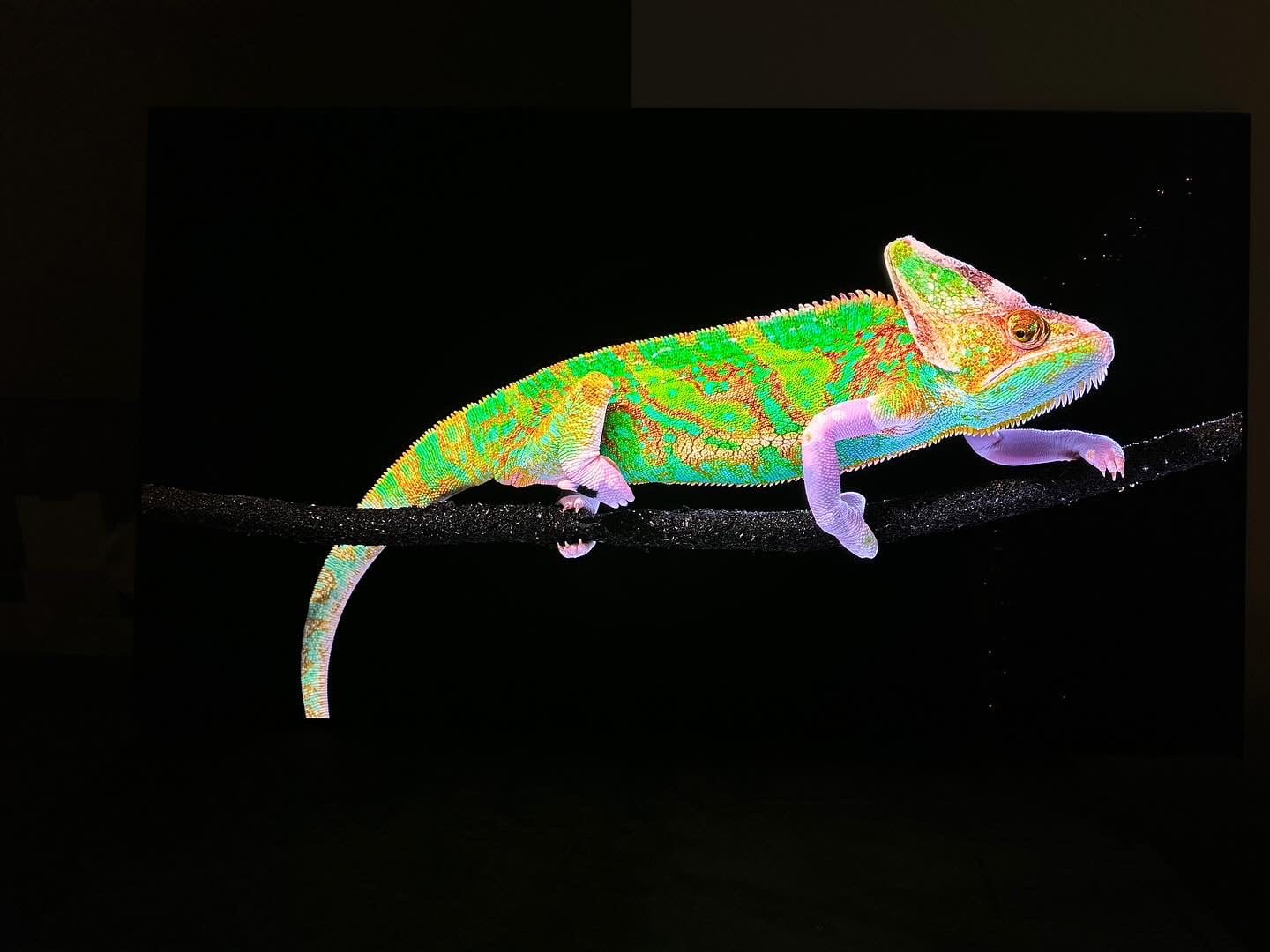
Evan Shepard/Gadget Review
We’ve redefined TV buying guides, setting us apart from any other site on the planet. Our unique approach combines in-house verification with a comprehensive dataset from trusted sites, focusing on key testing metrics like brightness (SDR and HDR), EOTF, response time, contrast ratio and color gamut.
We collect this data so you don’t have to, simple as that. We then average that testing data to represent that product’s capabilities accurately. Subsequently, we then leverage that data, filter and sort our buying guides, ensuring that all the products on our guides meet the strict requirements for your use case, such as ensuring smooth gaming experiences with fast response times and vibrant visuals tailored for gaming immersion.
You may notice some of our graphs contain “Source: RTings”. This is to indicate that the data we’re showing off in a graph has come from a single source – because it’s the only source that actually tested the criteria and had data for it! Normally, our data is an average out of all of the various publications that test and provide data to give you a good idea of how a product is going to perform on average.
Which Criteria Matters for Testing 40 Inch TVs?
By focusing on these criteria (3 required, 4 nice to have), anyone can quickly and easily compare these TVs and how they’ll perform. This helps you make an informed decision and purchase a TV that will fit into your small or tight space.
| CRITERIA | RANGE | REQUIRED | DEFINITION |
|---|---|---|---|
| SDR Brightness | 300+ nits | Yes | Assess the luminance of your display when operating in Standard Dynamic Range (SDR) mode. |
| HDR Brightness | 1000+ nits | Yes | Determine the luminance of your display in High Dynamic Range (HDR) mode. |
| Color Gamut (DCI P3 xy) | >= 90% | Yes | Evaluate the extent to which a TV can reproduce a specified spectrum of colors. |
| EOTF | 0.018 | No (nice to have) | Standard that governs how a display interprets and renders brightness and color. |
| Response Time | <=10ms | No (nice to have) | Time required for a pixel to transition from one color to another and then return to its original color. |
| Contrast Ratio | >= 10,000 | No (nice to have) | The ratio between the brightest white and darkest black that the screen can display. |
Our Trusted Data Sources
(Publication category Score is 80%+)
We looked at 210+ TV reviewers and while 24 are trustworthy (60%+ Trust Rating), we only use data from the testers that are “very trusted” which means a Trust Rating above 70%. The three we have listed below are our most trusted for TVs, along with our own in-house TV expert.
- Evan Shepard – Gadget Review
- Matthew Lopes – RTings, MuckRack
- Will Greenwald – PCMag, MuckRack, Twitter
- David Katzmaier – CNET, MuckRack, Twitter
Interested in a comprehensive analysis of our data sources? We’ve got you covered. Below, you’ll find a detailed list of every TV review website we’ve identified, organized by their respective Trust Ratings from highest to lowest. But we didn’t stop there. We’ve meticulously reviewed each publication and verified the data by checking whether the authors have bio links to MuckRack or LinkedIn. We’re committed to not only checking the facts but ensuring their veracity.
Best 40 Inch TV’s Test Data & Results
1. SDR & HDR Brightness TV Test Results
In well-lit rooms, the brightness level of your 40-inch TV, quantified in nits, is key to a great viewing experience. A TV that doesn’t meet the brightness requirement will struggle against natural and artificial light, resulting in a dim, lackluster image. Essentially, nits measure how well your TV can stand up to light interference, with higher values ensuring a sharper, more vivid display.
For standard viewing on the best 40-inch TV, you should look for at least 300 nits to strike the right balance between clarity and color quality in standard dynamic range (SDR) content. For high dynamic range (HDR) content, which offers richer colors and greater contrast, a minimum of 700 nits is ideal to truly appreciate the enhanced visuals. These brightness levels are recommended to ensure your TV performs well in bright settings, allowing you to enjoy your shows and movies without any loss in detail or quality. Aim for these minimums: SDR Brightness >= 300 nits; HDR Brightness >= 700 nits for the optimal experience.
Discover the top 40-inch TVs, ranked from brightest to least, all exceeding our brightness criteria.
Brightness
SDR: 300+ nits
HDR: 700+ nits
Acceptable range of performance
Definition: Maximum brightness in a specified pattern size window. Most commonly measured in a 10% or 100% white window.
Units of Measurement: nits (alternatively cd/m²)
Tools to Measure: TV, luminance meter
Why It’s Important:
Brightness helps counter ambient light so that details and colors don’t wash out and get lost.
SDR Brightness (in nits, higher is better)
HDR Brightness (in nits, higher is better)
2. Color Gamut (DCI P3 xy) TV Test Results
Color Gamut
>= 90%
Acceptable range of performance
Definition: The TV’s capability to display a spectrum of colors.
Units of Measurement: % (color space coverage in percent)
Tools to Measure: Colorimeter
Why It’s Important:
Inaccurate colors compromise the authenticity of the content.
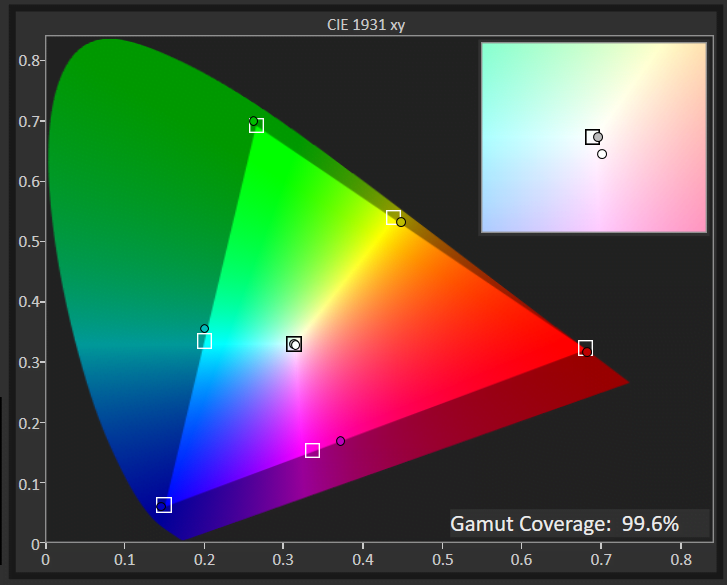
Color gamut defines the range of colors a TV can reproduce, directly affecting how vibrant and true-to-life the images look. A wide color gamut in a 40-inch TV brings out richer, more vivid colors – from the lush greens of a garden to the bright colors of animated characters, enhancing your viewing experience to closely mimic real life.
This concept is technically measured against standards like the DCI P3 xy, a benchmark for high-quality visuals. A 40-inch TV covering a higher percentage of this color space can display colors more accurately and vividly.
For those who prioritize vibrant and immersive visuals in a smaller package, aiming for a 40-inch TV with a color gamut of 90% or higher on the DCI P3 xy scale is ideal. This ensures that the content you watch is as vibrant and lifelike as possible, bringing a big viewing experience to a smaller screen. Below is all the TVs on this guide sorted by best to least in Color Gamut.
Below are the top 40-inch TVs, ordered by color gamut, all exceeding our testing criteria.
DCI P3 XY Color Gamut (as a %; high is better)
3. EOTF Test Results
The Electro-Optical Transfer Function (EOTF) plays a critical role in ensuring the content on your TV looks exactly as the creator intended. This technical feature adjusts your screen’s brightness levels, ensuring every scene, from the darkest shadows to the brightest highlights, is displayed with true-to-life accuracy.
In rooms flooded with light, a TV that nails EOTF calibration shines by preserving the intended contrast and detail in the picture despite the challenging conditions. It balances the brightness so that images remain vibrant and full of detail, unaffected by the glare of ambient light.
A TV that excels in managing EOTF offers an immersive and authentic viewing experience. It brings creators’ visions to life, accurately rendering every scene with the proper light and dark levels, no matter the lighting in your room. This means you get a consistent, realistic picture that captures the full spectrum of colors and contrasts, from the subtlest hues to the most intense explosions. Below is all the TVs on this guide sorted from best to worst in EOTF.
Below are all the 40-inch TVs on our list, ordered by EOTF, all exceeding our minimum requirement.
EOTF
< 0.018 (600 nit Δ)
Acceptable range of performance
Definition: How your TV interprets and renders the luminance data from content and translates it to be represented on screen. If EOTF/Gamma tracking is too low or too high, it will result in an over-brightened or over-darkened image from reference.
Units of Measurement: this test measures for the delta from the standard
Tools to Measure: Luminance colorimeter
Why It’s Important:
EOTF ensures that the game is displayed (color and HDR brightness) as the creator intended it
EOTF (source: rtings.com – 0 = no data exists; lower is better)
4. Response Time TV Test Results
Response Time
1ms-10ms
Acceptable range of performance
Definition: Speed at which a pixel transitions from one color to another
Units of Measurement: milliseconds (ms)
Tools to Measure: Screen, camera, test software
Why It’s Important:
A faster response time means less blur and thus more accuracy
A slow response time on a 40-inch TV during fast-paced scenes is like trying to watch a thrilling movie with a foggy lens. Imagine settling in for an action-packed sequence, only to have the swift movements turn into a blur, robbing you of the crisp, clear detail you crave. This isn’t just a minor annoyance; it’s a major detriment to your viewing experience, leaving you with a picture marred by motion blur and visual artifacts.
So, what exactly is response time? It measures how quickly a pixel on your TV can change from one color to another. In the context of watching fast-moving content or enjoying dynamic scenes on a TV, a low response time is crucial. A response time of 15 ms or lower is good, but if you plan on gaming on this set, aim for a response time of 10 ms or lower. At these levels, your 40-inch TV ensures smooth transitions and sharp visuals, making every scene come to life without any distracting blurs or delays.
Below are the top small TVs, ordered by response time.
Response Time (in milliseconds; lower is better)
5. Contrast Ratio Test Results
For TV enthusiasts, a solid contrast ratio is crucial for enjoying your favorite TV shows or movies, especially in darker settings. This feature directly impacts how lifelike and dynamic the picture appears on your screen, ensuring that dark scenes are displayed with clear, crisp blacks instead of murky grays and bright scenes retain their detail without appearing washed out.
Put simply, the contrast ratio is all about the range of luminance a TV can produce, from the deepest blacks to the brightest whites. It’s what brings depth to the image, enhancing the realism of every scene. Watching a movie in the dark, for example, the difference between a TV with a poor contrast ratio and one with a high ratio is stark: the former struggles, blending shadows into a flat gray, while the latter delivers true black, making night scenes more immersive and detailed.
Ideally, a contrast ratio of 10,000:1 is what you should aim for in a 40-inch TV. This level of luminance variance ensures that you’re getting a picture quality that can handle the nuances of lighting in any scene, providing a viewing experience that’s both rich and engaging. Note: OLED TVs have infinite contrast ratio, indicated by “0.”
Below are the top 40-inch TVs, ordered by contrast ratio, all exceeding our testing criteria.
Contrast Ratio
>=10,000:1
Acceptable range of performance
Definition: Difference between the darkest black and the brightest white a screen can display.
Units of Measurement: cd/m2
Tools to Measure: Luminance meter
Why It’s Important:
A higher contrast ratio delivers deeper blacks, enhancing content definition, especially in darker rooms.
Contrast Ratio (higher is better)
40 Inch TVs: Mistakes To Avoid
- Neglecting Viewing Distance: Viewing distance is critical for comfortable viewing, especially with smaller TVs like the top 32-inch TVs or 40-inch models. Ensuring an appropriate viewing distance for your TV’s size prevents eye strain and enhances the overall viewing experience. The same applies to larger screens; ensuring the ideal viewing distance for the best 50-inch TV is essential to achieve a balance between screen size and viewer comfort, enhancing immersion in the content you’re viewing.
- Overlooking Compatibility: Checking compatibility with existing devices is essential to avoid connectivity issues. A 40-inch TV ensures seamless integration with gaming consoles, streaming devices, and sound systems, which is crucial for uninterrupted entertainment. For gamers, check out our guide to the best gaming TVs. And if you’ve already bought a soundbar, read our guide on how to connect a soundbar to your TV.
- Ignoring Lighting Conditions: Considering room lighting conditions is key to optimizing picture quality. Adequate brightness and anti-glare features are particularly important for 40-inch TVs placed in areas with varying light conditions, like living rooms or bedrooms. Lighting consideration is equally important for curved TVs, as their unique shape can reflect light differently, affecting the viewing experience in well-lit rooms.
- Fixating Solely on Screen Size: While screen size is important, focusing only on it overlooks other crucial features. With 40-inch TVs, considering factors like resolution, refresh rate, and smart TV capabilities ensures a well-rounded entertainment experience tailored to your needs.
The Best 40 Inch TV Tests Compared
Product |
True Score
|
SDR Brightness
|
HDR Barightness
|
Color Gamut
|
EOTF
|
Response Time
|
Contrast Ratio
| |
|---|---|---|---|---|---|---|---|---|
| 87 |
|
|
|
|
|
| $1,198.00 $1,300 $102 |
| 87 |
|
|
|
|
|
| $1,996.99 |
| 87 |
|
|
|
|
|
| $829.00 $1,300 $471 |
| 86 |
|
|
|
|
|
| $867.95 $1,198 $330 |

